Welcome, home improvement enthusiasts! Has your drywall been damaged or become unsightly with exposed gypsum? Are you worried about the safety and appearance of your walls? We’ve all been there – a door accidentally knocked a hole in the wall, a leaky pipe caused water damage, or simply wear and tear from everyday use.
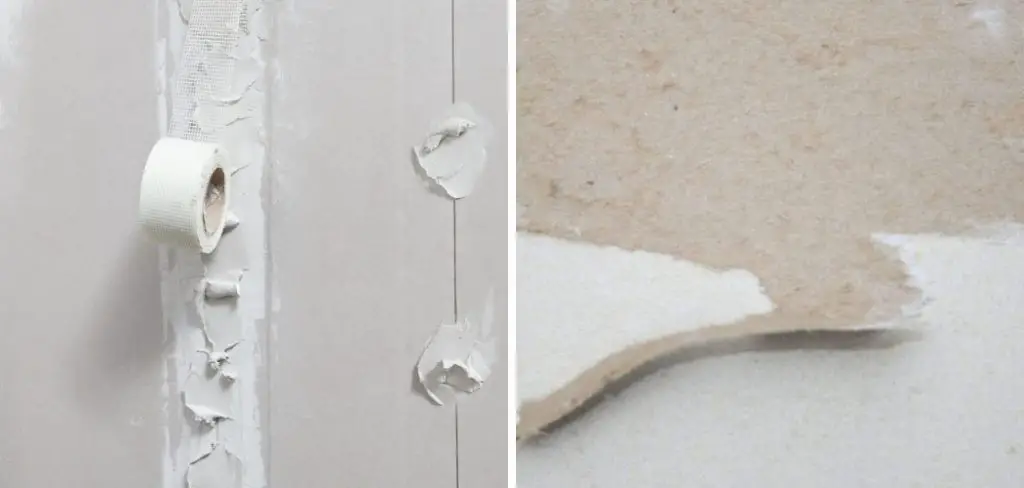
But fear not, because this blog post will guide you through everything you need to know about repairing drywall with exposed gypsum. With easy-to-follow steps and expert tips on how to repair drywall with exposed gypsum, you’ll be able to restore your walls to their former glory in no time. So put on your DIY hat and let’s get cracking!
What is Exposed Gypsum?
Before diving into the repair process, let’s first understand what exposed gypsum is. Drywall is typically made up of a gypsum core covered with paper on both sides. The paper provides structural support and helps to create a smooth surface for painting or wallpapering.
However, when the paper covering gets damaged or removed, it exposes the fragile gypsum core underneath. This can be a problem as gypsum is not meant to be exposed to moisture or impact, making the drywall vulnerable to further damage.
Tools and Materials Needed
To successfully repair drywall with exposed gypsum, you will need the following tools and materials:
- Joint Compound
- Drywall Knife
- Sandpaper
- Taping Knife
- Drywall Tape
- Utility Knife
- Primer
- Paintbrush or Roller
Be sure to have all of these items on hand before starting the repair process.
10 Step-by-step Guides on How to Repair Drywall With Exposed Gypsum
Step 1: Prepare the Area
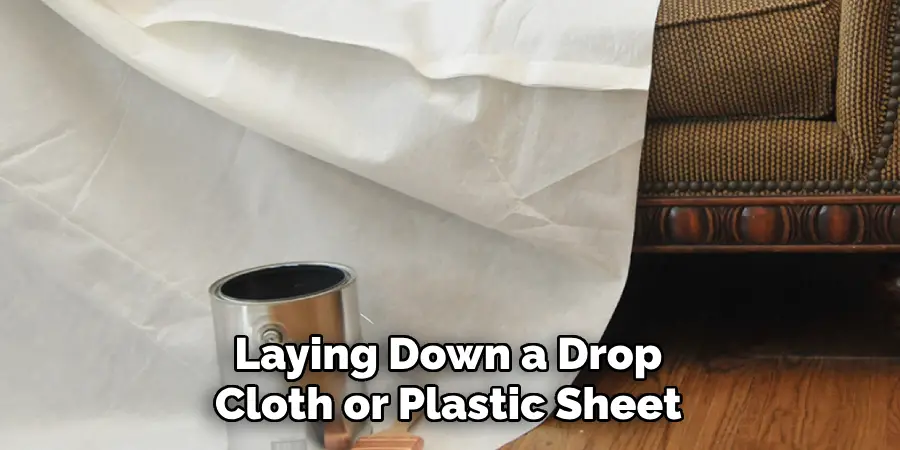
Before starting any repair work, be sure to protect your floors and furniture by laying down a drop cloth or plastic sheet. This will prevent any debris, dust, or joint compound from damaging your belongings. You can also use painter’s tape to cover any edges or corners that you don’t want to get paint on.
It’s always a good idea to wear protective gear such as gloves and goggles while working with drywall. You don’t want any accidents or injuries to occur.
Step 2: Clean and Dry the Area
Using a damp cloth, clean the area around the exposed gypsum to remove any dust or debris. Then, using a dry cloth or hairdryer, thoroughly dry the area. It’s essential to have a clean and dry surface before applying any joint compound. But make sure not to apply too much pressure while cleaning, as this could further damage the exposed gypsum.
Step 3: Cut Away Any Damaged Paper
Using a utility knife, carefully cut away any damaged paper around the exposed gypsum. You want to create a clean edge around the hole or area that needs repairing. This will make it easier for the joint compound and drywall tape to adhere properly. You can also use a drywall saw for larger or irregularly shaped areas.
Step 4: Apply Drywall Tape
Measure and cut a piece of drywall tape to fit the size of the hole or damaged area. Then, using your taping knife, apply a thin layer of joint compound over the exposed gypsum and onto the edges of the surrounding paper.
Place the drywall tape onto the joint compound and use your taping knife to smooth out any air bubbles or excess compound.
Step 5: Let it Dry

Once the drywall tape is in place, let it dry completely. This usually takes around 24 hours, but follow the instructions on your joint compound for a specific drying time. It’s crucial to let it dry completely before moving on to the next step.
You don’t want to rush the process and end up with a subpar repair job. It’s worth the wait for a long-lasting fix. This is also a good time to clean up any tools or materials you used in the previous steps.
Step 6: Apply Another Layer of Joint Compound
Once the first layer of the joint compound is dry, use your drywall knife to apply another thin layer over the tape. Make sure to feather out the edges so that they blend seamlessly with the surrounding wall. You may need to apply multiple thin layers, allowing each one to dry completely before moving on to the next.
Step 7: Sand it Down
Once the final layer of the joint compound is dry, use sandpaper to smooth out any imperfections or ridges. This will create a smooth surface for painting or wallpapering over.
Be sure not to press too hard, as this could cause further damage to the exposed gypsum. It’s always better to sand lightly and do a few passes, rather than pressing too hard and creating a dip or hole in the wall.
Step 8: Prime the Area
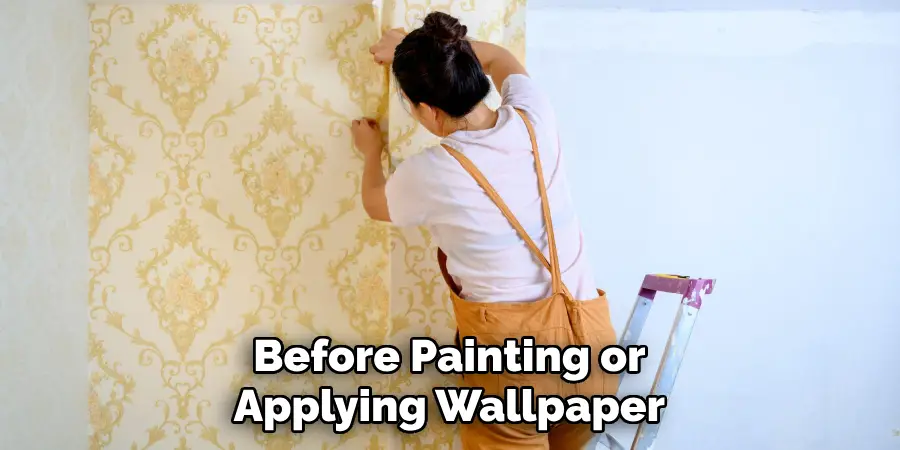
Before painting or applying wallpaper, be sure to prime the repaired area. This will create an even base for your paint or wallpaper to adhere to and prevent any noticeable differences in texture. Use a paintbrush or roller to apply a coat of primer and allow it to dry completely. It’s also a good idea to prime the surrounding areas, so everything blends seamlessly.
Step 9: Paint or Wallpaper
Now comes the fun part – painting or applying wallpaper! Use your desired method to cover the repaired area and let it dry completely. You may need to apply multiple coats for a seamless look.
This is also a good time to touch up any surrounding areas if needed. But be sure to let the paint or wallpaper dry completely before moving on to the final step. It’s always better to wait a little longer for the best results.
Step 10: Admire Your Handiwork
Congratulations, you have successfully repaired drywall with exposed gypsum! Take a step back and admire your handiwork. Your walls are now as good as new, and no one will ever know there was once a hole or damaged area.
Remember, patience and attention to detail are key when it comes to repairing drywall. It’s always better to take your time and do the job right for a long-lasting fix.
Following these steps on how to repair drywall with exposed gypsum will guide you through the process of repairing drywall with exposed gypsum, resulting in a seamless and professional-looking finish.
Just remember to always use caution when working with drywall and take your time for the best results. Happy repairing!
Additional Tips and Tricks
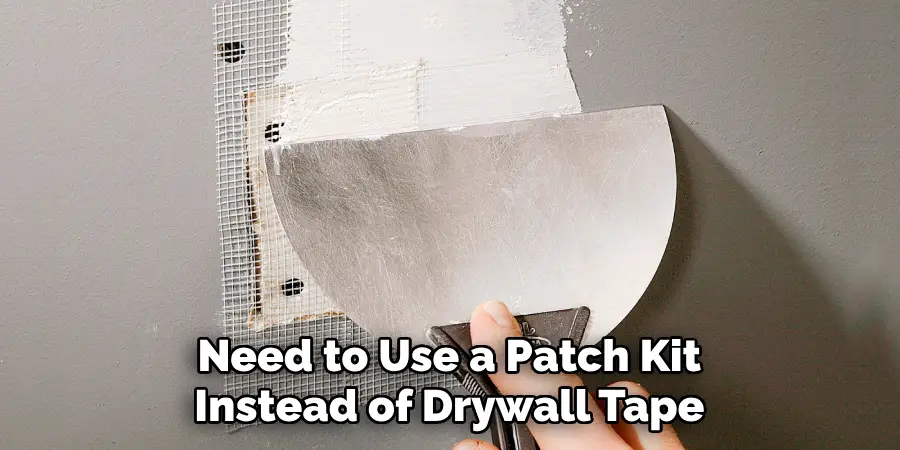
- For Larger Holes or Areas With Multiple Exposed Gypsum Spots, You May Need to Use a Patch Kit Instead of Drywall Tape. These Kits Come With a Thin Piece of Drywall and a Self-Adhesive Mesh to Create Strong Support Behind the Repair.
- Don’t Be Afraid to Use Multiple Layers of Joint Compound for a Smooth Finish. Just Be Sure to Let Each Layer Dry Completely Before Applying the Next.
- Keep Some Extra Scraps of Drywall on Hand in Case You Need Them for Future Repairs. This Will Save You Time and Money in the Long Run.
- If You’re Planning on Painting, Be Sure to Use a Primer That is Compatible With Drywall. This Will Ensure Proper Adhesion.
- Consider Using Self-Adhesive Wall Patches for Quick and Easy Repairs of Small Holes or Cracks.
- For Larger Areas, It May Be Necessary to Replace the Damaged Section of Drywall Completely. This Can Be Done by Removing the Damaged Section and Installing a New Piece Using Drywall Screws and Joint Compound.
- Always Follow Proper Safety Precautions When Working With Tools and Materials, Such as Wearing Protective Gear and Taking Care to Avoid Accidents or Injuries. Overall, repairing drywall with exposed gypsum may seem like a daunting task, but with the right tools and techniques, you can achieve professional results. Don’t be afraid to take your time and seek help if needed. Happy repairing!
Frequently Asked Questions
Q1. Can I Use Any Type of Joint Compound for This Repair?
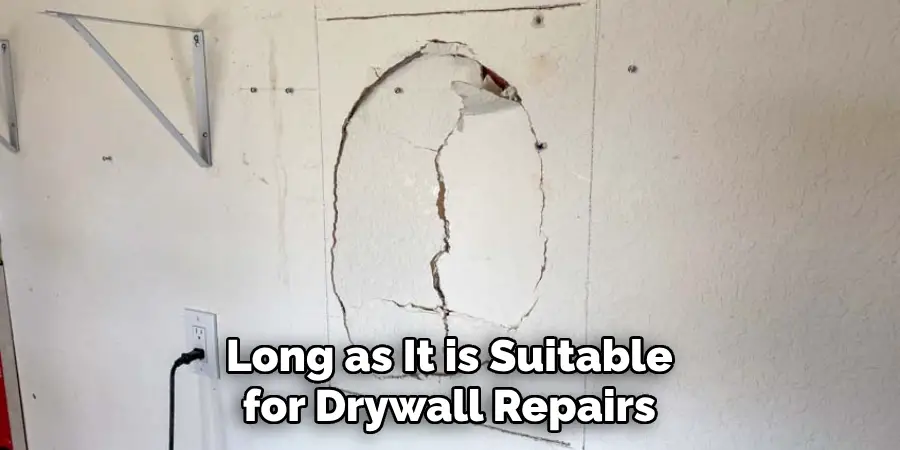
A: Yes, you can use any type of joint compound as long as it is suitable for drywall repairs. Be sure to follow the instructions on the packaging for best results.
Q2. How Long Should I Let Each Layer of Joint Compound Dry Before Applying the Next One?
A: It’s important to let each layer dry completely before applying the next one. This usually takes around 24 hours, but follow the instructions on your joint compound for a specific drying time.
Q3. Can I Paint or Wallpaper Over the Repaired Area Right Away?
A: No, it’s important to let the primer and any paint or wallpaper dry completely before moving on to the final step. This ensures a seamless finish and prevents any damage to the repair job. always take your time for the best results.
Conclusion
Now that you have learned how to repair drywall with exposed gypsum, it’s time to put your new skills to the test. Remember, repairing drywall can be a daunting task, but with the right tools and techniques, anyone can do it. Don’t be afraid to get your hands dirty and embrace the challenge of fixing your own walls.
Trust me, the satisfaction of seeing a seamless and smooth wall after your repair work is done is unbeatable. Plus, by learning how to repair drywall yourself, you’ll save money on hiring professionals and have the knowledge and confidence to tackle any future repair projects.
